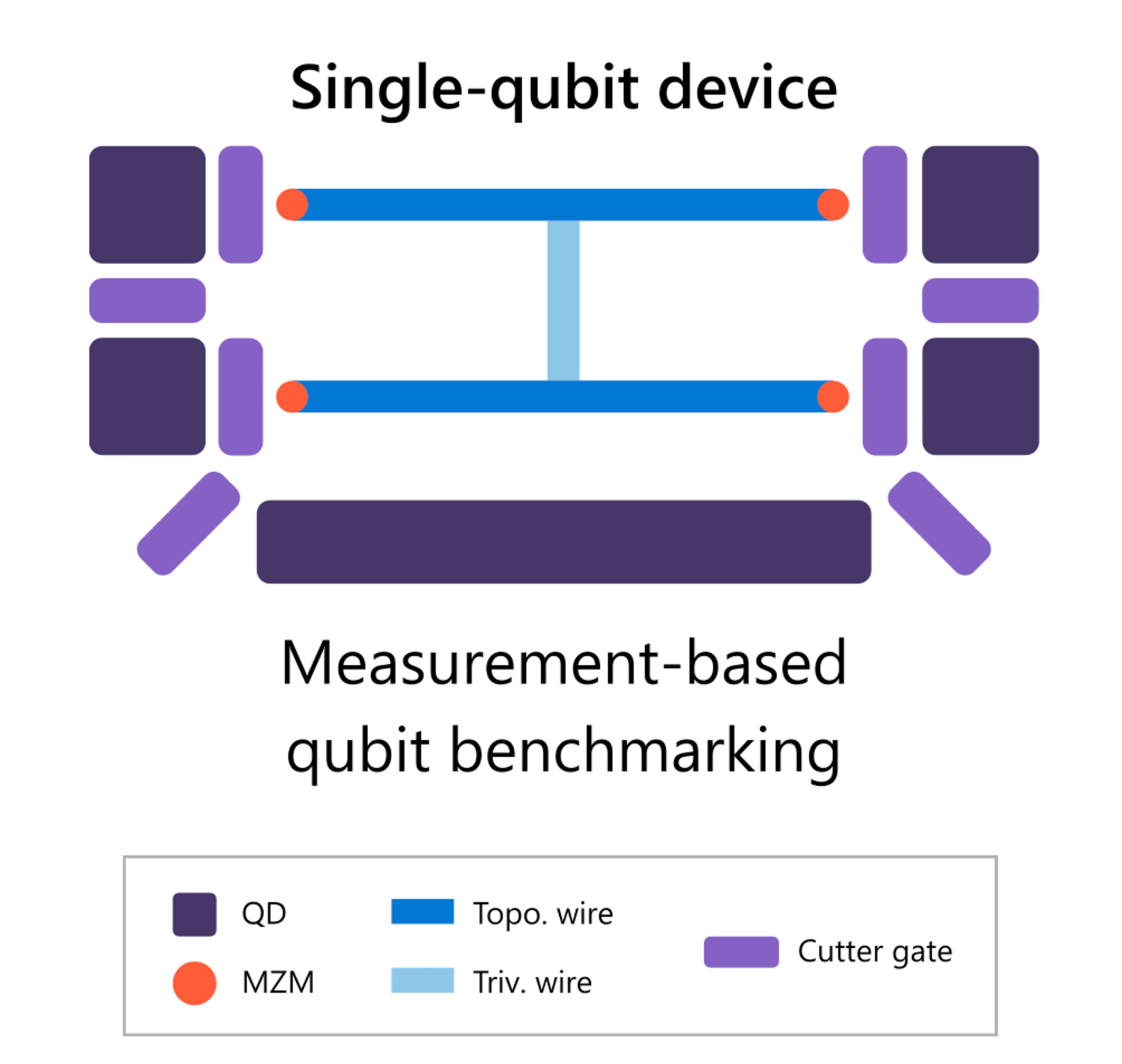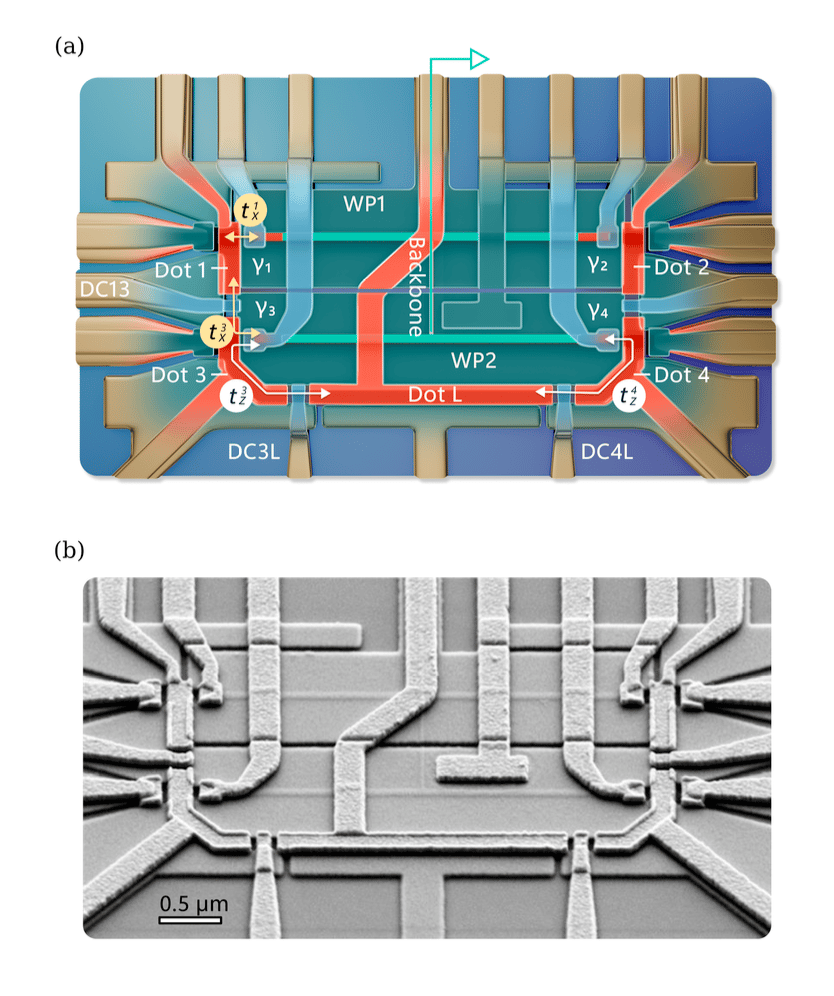- Michaela Eichinger, PhD
- Posts
- What's Really Going On at Microsoft Quantum
What's Really Going On at Microsoft Quantum
A simple guide to their hardware, roadmap, and the results from their latest paper
Hi everyone,
There has been a lot of talk and confusion surrounding Microsoft's progress in topological quantum computing. After a wave of announcements earlier this year, more details finally emerged in a few scientific papers, and they tell a story that's quite a bit different from the initial headlines.
Here is my deep dive into what Microsoft is actually doing, what their newest results mean, and the long road they have ahead.
A Tale of Two Architectures
To understand Microsoft's work, it's essential to first grasp that there isn't just one way to build a quantum computer. The immense difficulty of the challenge has led researchers to explore different fundamental architectures for how a computation should run. The primary difference between Microsoft's approach and the mainstream comes down to how quantum information is processed.
The most common approach is the Gate-Based Model. In this architecture, information is stored in qubits that are then actively manipulated. A quantum algorithm is translated into a precise sequence of operations, or "gates," that are applied to the qubits to dynamically evolve their state toward the final answer. In this model, the quality of the computation rests on the ability to perform these many gate operations with extremely high fidelity.
Microsoft is pursuing a different architecture: the Measurement-Based Topological Model. Here, the philosophy is to start with an intrinsically stable system. Quantum information is encoded in the collective ground state of special, naturally error-resistant particles called Majorana zero modes (MZMs). Instead of applying gates, computation proceeds by making a series of simpler, projective measurements on the system. These measurements themselves drive the computation forward and enact the logical operations. This means that the focus shifts from the fidelity of many complex gates to the fidelity of these measurements and the inherent stability of the qubit itself.
Microsofts core hardware component for this is the "tetron".
The Tetron: A Closer Look at the Hardware
Before we go any further, let's look at what this "tetron" device actually is. It's a microscopic, physical device fabricated on a chip, and its specific structure is engineered to create and control the Majorana zero modes.

Schematic of a tetron [1]
The tetron has a distinctive sideways "H" shape and is built from a superconductor-semiconductor heterostructure. Here’s a breakdown of its key components:
Topological Nanowires: The two horizontal bars of the "H" are the core of the device. These are nanowires made from a semiconductor (like InAs) coated with a superconductor (like Aluminum). When placed in a strong magnetic field, this material combination is designed to enter a "topological phase." In this phase, a Majorana zero mode is predicted to appear at each of the four ends of these two wires.
The Trivial Backbone: The vertical bar connecting the two nanowires is the "backbone". It is a trivial superconductor, meaning it is not in the topological phase and does not host MZMs. Its function is to physically and electrically connect the two topological nanowires into a single, cohesive island.
Quantum Dots and Gates: Surrounding the tetron is a series of quantum dots and tiny electrostatic gates. These are not part of the qubit itself, but are essential tools for control and readout. By applying voltages to these gates, scientists can control the coupling between different quantum dots and the MZMs, allowing them to form the specific "interference loops" needed to perform the X and Z measurements.
This entire structure is designed so that the four MZMs at the corners of the H can collectively store a single unit of quantum information, protected from local noise.
The Official Roadmap to Fault Tolerance
With this device in mind, Microsoft's "Roadmap to fault tolerant quantum computation" paper lays out a methodical, four-stage plan. Each step is a milestone device designed to prove a necessary capability.
Milestone 1: The Single-Qubit Device. The goal is to build one "tetron" and prove you can perform the two basic, non-commuting measurements (X and Z) needed to validate it as a qubit. They refer to this as Measurement-Based Qubit Benchmarking (MBQB).
Milestone 2: The Two-Qubit Device. This step uses a second qubit as a helper to perform a true quantum operation (a Clifford gate) on the first qubit, all through measurement. This demonstrates "measurement-based braiding," a key technique for manipulating information without physically moving the particles.
Milestone 3: The 4x2 Tetron Array (Eight Qubits). Here, the goal is to demonstrate quantum error detection. They plan to create "logical qubits" (where information is encoded across multiple physical qubits for protection) and show this encoded information is more robust than on a bare physical qubit.
Milestone 4: The 2x1 Logical Qubit Array. This is the precursor to a scalable machine, involving a larger array capable of full quantum error correction and performing operations between logical qubits using "lattice surgery".
Wait a minute... if the architecture is intrinsically noise-protected, why is error correction still needed?
"Protected" doesn't mean "Perfect". Topological protection is designed to exponentially suppress many physical errors, but it can't eliminate them all. Small errors from internal sources, like residual coupling between Majorana modes, and external noise from the environment still occur.
For any useful, large-scale algorithm, these small errors eventually accumulate and this is why quantum error correction remains essential.
The First Tetron Experiment
Microsoft's new experimental paper [2] reports on their progress on Milestone 1. But before diving into the results, we have to address the central question that everyone is asking: can we really call the device they built a "qubit"?
Based on the paper, the most accurate answer in my view is: not yet. The device is currently a physical system being benchmarked to see if it can function as a qubit. For this to be confirmed, two key criteria must be met. First, the two different measurements (X and Z) must be proven to be non-commuting, which the paper explicitly states is the "next step of our roadmap". Second, the operations need to be high-fidelity. The reported 16% operational error for the X-measurement shows the device is not yet operating at the level of a robust quantum bit.
So, what does this paper actually show?
It details the complex and methodical process of characterising the tetron device, the stated goal of Milestone 1.

(a) Schematic and (b) SEM image of the tetron device. [2]
A Closer Look at the Device Tune-Up
The results in the paper were only possible after an intensive tune-up procedure to get the device into the correct operating state. This process highlights the incredible level of control required:
Finding the Topological Phase: First, the researchers used the Topological Gap Protocol (TGP), a series of electrical measurements to find the exact magnetic field and gate voltage settings where the nanowires enter the topological phase needed to host Majoranas.
Isolating the Device: Once the correct physical state was found, they electrically isolated the tetron from the external measurement leads by applying voltages to "cutter gates," turning it into a closed quantum island.
Balancing the Interferometer: To get a strong signal, the quantum interference loops for either the X or Z measurement must be "balanced." This is a delicate tuning process where they adjust voltages on the quantum dot gates to ensure the different paths an electron can take around the loop are properly weighted to maximize measurement sensitivity.
Fine-Tuning the Wires: During this process, they used other junctions on the device to perform local conductance measurements, allowing them to verify that the wires remained in the optimal state (indicated by a "zero-bias peak") and to precisely set the final wire plunger voltages.
The Key Findings
After this intensive setup, they performed the core experiment: forming the X and Z interference loops and measuring the device's quantum state over time. The results from these two configurations were strikingly different and provide the central finding of the paper:
The Z-Measurement was very stable. When measuring the state of Majorana modes on a single nanowire, the quantum state persisted for a long time, with a characteristic lifetime of 12.4 ms. This corresponds to a low operational error rate of 0.5%.
The X-Measurement was not very stable. When measuring across both nanowires, the quantum state flipped very rapidly, with a lifetime of only 14.5 µs, nearly 1,000 times shorter. This resulted in a high operational error rate of 16%.
This vast difference in stability is the most important result. It acts as a powerful diagnostic tool, confirming that the dominant source of error is an internal issue with the device (residual coupling between the Majorana modes) rather than external noise from the environment.
So, where does this leave Microsoft's ambitious project?
The Promise (The Good News)
Roadmap-Hardware Alignment: The experimental results for Milestone 1 align with their theoretical models and the roadmap's goals. This builds confidence that they understand their system well.
A Clear Path Forward: The data provides a clear engineering directive. To improve performance, they must now focus on reducing the internal MZM coupling to increase the X-measurement lifetime.
The Reality Check (The Challenges)
The X-Error Hurdle: A 16% error rate on the X-measurement is far too high for fault-tolerant computing. Reducing this is a monumental materials science and fabrication challenge.
The Qubit Test is Next: The paper is clear that the next step is to perform X and Z measurements in rapid succession to prove they don't commute. This is the definitive test that would confirm they have a functioning quantum bit.
Ultimately, this new work offers a clear assessment of a first-generation Majorana device, in which the Microsoft team pinpoints to the key engineering challenges. While they have built the device for Milestone 1, the crucial test of performing rapid, sequential X and Z measurements to confirm the quantum nature of the qubit is still to come. All eyes will now be on that next experiment, as it will serve as the definitive validation of this first major step on their roadmap.
Until next time,

References
[1] Microsoft Quantum, "Roadmap to fault tolerant quantum computation using topological qubit arrays", arXiv:2502.12252 (2025).
[2] Microsoft Quantum, "Distinct Lifetimes for X and Z Loop Measurements in a Majorana Tetron Device", arXiv:2507.08795 (2025).
Reply